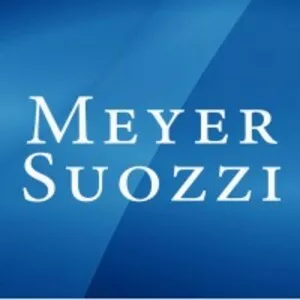Pecuniary Damages Rule Under New York Law
I have commented often on the type of monetary damages that are recoverable in the context of a claim for fraud in a civil (as opposed to criminal) action. While there are other potential remedies for fraud, such as rescission of a transaction, when it comes to seeking actual monetary compensation allegedly resulting from fraudulent conduct, the courts of New York have determined that only so-called out-of-pocket "pecuniary" damages are recoverable. That essentially means that only actual monetary losses directly resulting from the fraud may be recovered—not things like (a) lost profits or what might have been "gained" in the absence of fraud; (b) "benefit of the bargain" type of damages, such as what might be recovered for breach of contract; or (c) compensation for alleged "pain and suffering" types of injuries. See generally Court Elaborates on Pecuniary Loss Damages for Fraud in M&A Deal; Damages Limited to Pecuniary Loss Resulting from Fraud, Not "Pain and Suffering."
The New York Court of Appeals in Connaughton v Chipotle Mexican Grill, Inc., 29 NY3d 137, 142 (2017) nicely summarized the law as follows:
In New York, as in multiple other states, " '[t]he true measure of damage is indemnity for the actual pecuniary loss sustained as the direct result of the wrong' or what is known as the 'out-of-pocket' rule" (Lama Holding, 88 N.Y.2d at 421, quoting Reno v. Bull, 226 N.Y. 546, 553 [1919] ). Under that rule, "[d]amages are to be calculated to compensate plaintiffs for what they lost because of the fraud, not to compensate them for what they might have gained.... [T]here can be no recovery of profits which would have been realized in the absence of fraud" (id. at 421, citing Foster v. Di Paolo, 236 N.Y. 132 [1923], AFA Protective Sys. v. American Tel. & Tel. Co., 57 N.Y.2d 912 [1982], and Cayuga Harvester, Inc. v. Allis–Chalmers Corp., 95 A.D.2d 5 [4th Dept 1983] ). Moreover, this Court has "consistent[ly] refus[ed] to allow damages for fraud based on the loss of a contractual bargain, the extent, and indeed ... the very existence of which is completely undeterminable and speculative" (Dress Shirt Sales v. Hotel Martinique Assocs., 12 N.Y.2d 339, 344 [1963] ).
Supreme Court Kousisis Decision
Of course, as a student of civil fraud and an experienced practitioner handling all manner of fraud claims, I take notice when our nation's highest court makes any mention of "common law fraud" jurisprudence. So I was interested to see what the Supreme Court of the United States had to say about damages recoverable under the traditional common law of fraud in the recent decision in Kousisis v. United States, 605 U.S. __, 145 S. Ct. 1382 (2025).
Lest those who do a quick reading of the decision make faulty conclusions or derive misguided impressions, as I explain below: The context and substance of the Supreme Court's discussion of common law fraud in Kousisis was quite different than in the typical civil cause of action for fraud under New York law and so, the Court's comments in Kousisis on common law fraud really have little to no bearing upon how damages are analyzed under New York case law in the context of civil fraud claims.
First, the context: The Kousisis case involved a criminal prosecution (not a private civil case) under Federal criminal statutes for wire fraud and conspiracy to commit the same, as provided under 18 U. S. Code §§ 1343 and 1349. Second, the case did not involve civil remedies for the alleged fraud, but rather criminal penalties against the defendants so charged.
So here is the relevant background of the case (deriving largely from the nicely-summarized case syllabus):
The prosecution arose out of painting contract projects that the defendants entered into and performed for the Pennsylvania Department of Transportation ("PennDOT"), for which the defendants derived $20 million in profits. Federal regulations required contract awardees to subcontract a portion of every contract to a disadvantaged business enterprise. So as part of the bidding process, Kousisis falsely represented that his company would obtain its paint supplies from a prequalified disadvantaged business. Contrary to his representations, however, unbeknownst to PennDOT, Kousisis arranged for the purported supplier to function as a mere "pass-through" entity. As a pass-through, the "supplier" did not provide any paint supplies. To the contrary, its only role was to funnel checks and invoices to and from the actual suppliers. Not only did this arrangement contradict Kousisis's prior representations, it also violated the requirement that disadvantaged businesses perform a "commercially useful function" under federal regulations.
Key to this scenario is the undisputed fact that all the painting under these contracts was performed to PennDOT's full satisfaction. The defendant argued, therefore, the essence of "no harm, no foul"—that is, since we gave them precisely what they paid for—satisfactory painting—there was no economic harm that could form the basis of criminal fraud.
The charges were premised on a fraudulent-inducement theory—in other words, that petitioners had induced PennDOT to award them the painting contracts under materially false pretenses. After a jury convicted defendants of wire fraud, they moved for acquittal. In their view, despite the lack of disadvantaged-business participation, PennDOT had received the full economic benefit of its bargain. So, defendants contended, the Government could not prove that they had schemed to defraud PennDOT of "money or property" as the relevant criminal fraud statute requires. The appellate court rejected that argument and the Supreme Court affirmed, ruling that the relevant criminal statute did not require the victim of the alleged fraud to sustain net pecuniary loss or for the defendant to intend to cause such loss.
Among the issues addressed by the Supreme Court was how "fraud" has been adjudicated under existing common law principles since the criminal statute made reference to fraud. The Government needed to prove that defendants used the wires to execute a "scheme or artifice to defraud, or for obtaining money or property by means of false or fraudulent pretenses, representations, or promises." Defendants argued that economic loss is inherent to the common-law understanding of fraud, a term that appears twice in the wire fraud statute. Because of that argument, the Supreme Court proceeded to explore common law fraud, commenting: "When Congress uses a term with origins in the common law, we generally presume that the term 'brings the old soil with it.' Sekhar v. United States, 570 U. S. 729, 733 (2013). As [defendants] note, we have long interpreted the statutory term 'fraud' (and its variations) this way—that is, by reference to its common-law pedigree." But in order to rely upon common law principles to ascertain the meaning of a statute, those principles must have "accumulated a settled meaning." The Supreme Court then did a rather brief review of some treatises, Black's Law Dictionary and a few cases, and concluded that economic harm was not always required in fraud-related contexts (citing among other things, rescission as an available remedy), and also, that it was not "widely accepted" under the common law that economic loss was essential.
The Supreme Court did not cite or rely upon a single New York State decision and did not comment upon the law of damages or remedies for the civil cause of action for fraud under New York law. Moreover, the Supreme Court was interested in assessing the general remedies for fraud-type claims, observing that rescission was a remedy that did not necessarily result in monetary recovery. The Supreme Court also discussed concepts relating to the older reference to claims for "deceit"—which is a term that really incorporated similar concepts of what is now known as a cause of action for fraud under New York case law, and was typically referred to as "fraud and deceit."
Commentary
Although the Supreme Court in Kousisis undertook a brief analysis of what it considered to be principles relating to remedies under common law fraud as they existed when Congress passed the relevant criminal fraud statutes, that analysis has no real bearing upon how New York courts actually apply the law relating to causes of action for fraud and associated recoverable damages. The main focus in Kousisis was the meaning of the Federal criminal fraud statutes, and whether certain principles were "widely accepted" and "settled" under the common law. The Supreme Court reviewed that subject just sufficiently enough to reject defendants' argument and not beyond that. As such, New York law of fraud stands firmly in place. Whether the factual scenario in Kousisis would amount to a cause of action for civil fraud under New York law and what remedies might be available must await another day.
The content of this article is intended to provide a general guide to the subject matter. Specialist advice should be sought about your specific circumstances.


